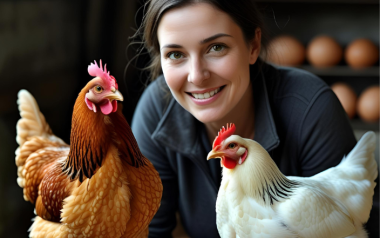26 Dec 2022
Possible causes of keel bone fractures (KBF) on laying hens
Keel bone fractures (KBF) are considered the major welfare issue in commercial laying hens, which represents possible economic...
Keel bone fractures (KBF) are considered the major welfare issue in commercial laying hens, which represents possible economic losses for the poultry industry.
The prevalence of KBF has increased worldwide in the last 20 years, with around 97% of presentations in non-cage systems, being also pretty common in caged operations.
This condition could affect the:
- behavior,
- physiology,
- egg quality, and
- production rate.
The causing factor of this problem has not been detected or reported, which hampers the risk factor identification.
It is critical to find the risk factors associated with the KBF to understand the causes of fracture development. However, sometimes it is hard to identify the differences in keel bone fractures and keel bone deviations, with overlapping nomenclature such as keel bone damage, keel bone disorders, keel bone deviation, etc. (Ida et al., 2021)
Therefore, below is described recent research about the possible causes of KBF:
- Abnormal Bone Metabolism May Be a Primary Causative Factor of Keel Bone Fractures in Laying Hens:
This research evaluated the impacts of bone metabolism and development status on keel bone damage by determining the levels of serum bone turnover markers in laying hens.
- Keel-bone fractures are associated with bone quality differences in laying hens:
In this trial, the differences in metabolism, mineral elements, and the microstructure of keel bones for laying hens individually housed in furnished cages, both
TO CONTINUE READING REGISTER IT IS COMPLETELY FREE
Access to articles in PDF
Keep up to date with our newsletters
Receive the magazine for free in digital version
REGISTRATION
ACCESS
YOUR ACCOUNT
LOGIN
Lost your password?






































